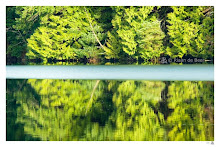I have spent quite a bit of time thinking about what the best way forward is for this young new photographer, and he has been willing to be open to my ideas. I think there were two problems with his approach. One is the assumption that you need a digital camera to get into photography and secondly that you need a high end camera to do photography.
There is an assumption among young photographers that digital photography is the only form of valid photography. In fact film photography does not even come into the realm of the possible for most new photographers. This is unfortunate. Firstly they will never experience the incredible magic of seeing a print appear on paper in the developer tray. That was the thing that hooked me forever on making pictures. Secondly they will likely never learn how exposure works unless they make a serious effort to learn their digital camera’s manual mode. This is essential, because learning to see and understand light is critical if you want to be a photographer. Doing black and white film is one of the single best ways to learn to see the light. In my view it is the most important fundamental skill that you need to know if you want to be a serious photographer. It is the photographic equivalent of having to learn classic music before you can play jazz.
I have been encouraging him to use that film SLR and to buy some black and film stock. Spending about $100 will get you everything you need to develop film in your bathroom. Once he has developed the negatives they can be scanned and converted to a digital work flow, which will allow him to still enter the digital online world with his images. I think this is an excellent route for a new photographer to learn the craft.
The second assumption of needing a high end camera may be true depending on what you use the images for. If you are shooting for commercial purposes then yes, you need the best possible camera you can afford. But the vast majority of young new photographers have to learn their art before they can sell their product. The two require separate skills and the second is impossible without the first.
To learn the art photography, or drawing with light, you only need a box with a hole and a light sensitive surface. Most of us have one in our cellphone, mp3 player, compact digital or an unused old film camera sitting on a forgotten shelf. Chase Jarvis recently did a talk about the consequences of creativity in Denver. It is worth listening to because it elegantly makes the point that we need to feed our creative habit for its own sake, and that the consequences of that process are far larger that we can anticipate when we do it.
The engaging in that process requires a personal commitment of energy from our side. A commitment to be carried along with the flow of ideas and acts which are mostly done for fun and often will fail but all add to our creative development as an artist.
I wanted to make this point as strongly as I can, so I put away my fancy DSLR with its prime lenses, took our five year old (which in digital terms is ancient) compact digital camera and kept it with me for a day, making images and short videos as I went about my daily business of earning a living. The end result is the short 2 minute video below. It was made for fun, to make the point that you can use any camera to be creative and hopefully also gives a glimpse into my own creative process, in terms of how I see and how that leads to the making of a photo.
See the video on youtube: http://bit.ly/Ri89V



1 comment:
Nicely done, Riaan, showing how you "see" and create an eternally still frame from the stream of life that we flow through is excellently depicted in the video. Interesting blog posts, overall, very thoughtful and a great counterpoint to the all-too frequent emphasis on the tools that help us to re-construct the world as we experience it.
Post a Comment